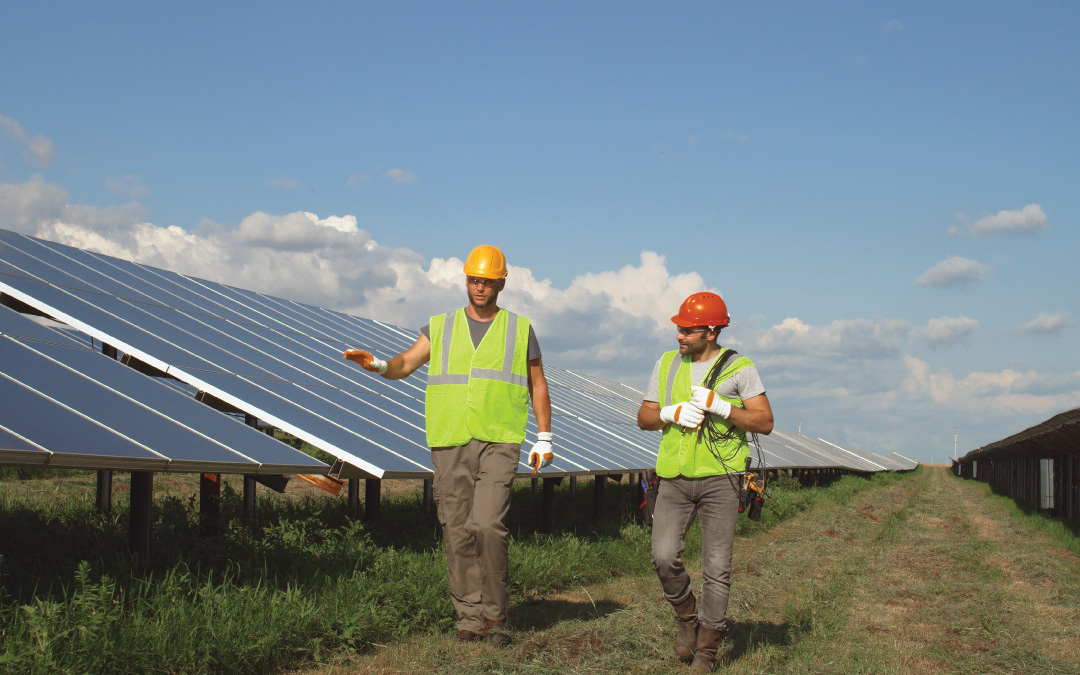NFPA 70B, the Standard Practice for Electrical Equipment Maintenance includes major updates for 2023. Previously “recommended” practices have become “required”. This is limited to oversight by AHJs for now, but the writing is on the wall. The new requirements will be adopted by insurance companies, large corporations, and diligent, proactive site managers to maintain their large asset investments.
NFPA 70B provides guidance for:
- Safety
- Testing and test methods
- Planning, implementing, and the frequency for electrical preventive maintenance programs
Solar/ESS ownership responsibilities extend past the initial installation. CES is here to make sure your solar/ESS assets are compliant to meet these new standards. We need install with safety in mind, but also maintain sites for safety, productivity, and the longevity of equipment. Regular maintenance is affordable and prevents unplanned, expensive costs for repairs and downtime. Requirements for PV and energy storage systems include equipment condition assessment, documentation and labeling, visual inspections, cleaning, mechanical servicing, and electrical testing.
Building a Baseline with Equipment Condition Assessments and Document Collection
The first step towards compliance involves conducting a thorough maintenance survey of the site, equipment, and components to identify any underlying issues and evaluate the equipment’s overall condition. CES’s O+M specialists guarantee proper operational status and the implementation of best practices. The evaluation of equipment establishes both its condition and subsequently drives the maintenance intervals presented in the following NFPA 70B table.
Maintenance intervals
| Condition 1 | Condition 2 | Condition 3 | |
| PV Inspection and Testing
|
5 yrs | 3 yrs | 1 yr |
| Battery Inspection | 1 yr | 1 yr | 1 month |
| Battery Testing | 3 yrs | 3 yrs | 1 yr |
Documentation also plays a pivotal role, where our tools and expertise ensure that all aspects are well-organized and aligned. This list covers items required for under NFPA 70B:
- System Designer/Installer Information:
- Include the contact information and details of the individuals or companies responsible for designing and installing the system.
- Mention the installation date and any relevant commissioning dates.
- Emergency Contacts for Owner:
- Provide emergency contact details that the owner can use in case of system failures, malfunctions, or other emergencies.
- Specifications:
- Document the detailed specifications of the system, including its components, features, capabilities, and performance requirements.
- Include information about any standards or regulations that the system needs to adhere to.
- Electrical Schematics and As-Built Drawings:
- Include detailed electrical schematics that illustrate the wiring, connections, and components of the system.
- As-built drawings reflect any changes made during the installation compared to the original design.
- Signage:
- Provide signage for safety, operation, or identification purposes for: arch flash, shock, mechanical hazards, means of isolation location.
- Mechanical Drawings:
- Include detailed mechanical drawings that illustrate the physical layout and arrangement of the system’s components.
- Commissioning Manual, Test Plan, and Test Results:
- The commissioning manual should outline the procedures for testing and verifying the functionality of the system after installation.
- The test plan should detail the specific tests to be conducted, the equipment needed, and the acceptance criteria for each test.
- Include the actual test results and records, highlighting the successful tests and any issues encountered and resolved.
- Operations and Maintenance Manuals:
- Provide comprehensive documentation on how to operate and maintain the system.
- Include step-by-step procedures for startup, shutdown, regular operation, and troubleshooting.
- Cover routine maintenance tasks, recommended schedules, and procedures for addressing common issues.
Harness the Power of Data
Remember, the quality and comprehensiveness of these documents are crucial for the successful operation and maintenance of the system. CES makes sure to keep the documentation updated and accessible for relevant stakeholders throughout the system’s lifecycle.
We have developed software that will provide data-driven maintenance records available anywhere at any time. These can be critical for reactive service, scheduling maintenance intervals, warranty claims, and even predictive failure. Continental’s approach takes much of the guessing out of what scope should be required for ongoing maintenance and recording an active history of your solar and ESS electrical equipment.
The Benefits Outweigh the Costs
Take the guess work out of NFPA compliance and let CES power your maintenance plans. The benefits overwhelmingly outweigh the costs. For CES O&M, the solar and energy storage systems (ESS) industry, the NFPA 70B is important for several reasons:
- Safety: Solar and ESS systems involve complex electrical components, including inverters, batteries, and associated control systems. Proper maintenance is crucial to identify and mitigate potential safety hazards, such as loose connections, damaged components, or overheating, which could lead to electrical fires or accidents.
- Reliability: Regular maintenance helps ensure the reliable and efficient operation of solar and ESS systems. By identifying and addressing issues early on, the risk of unexpected system failures or breakdowns is reduced, ensuring continuous and stable energy generation and storage.
- Maximizing Performance: Well-maintained systems tend to perform optimally. Regular inspections, cleaning, and servicing can help preserve the efficiency of solar panels, inverters, and batteries, maximizing their energy output and extending their lifespan.
- Insurance Requirements: Insurance companies often require businesses and homeowners to follow recognized safety standards like NFPA 70B to maintain coverage for their solar and ESS installations. Complying with these standards can help in obtaining and retaining insurance coverage.
Protect Your Investment
CES O+M experts can help NFPA 70B updates. Our maintenance plans can keep you safe, compliant with the latest standards, and protect your ROI. Our technicians are the best in the business. We employ highly trained, NABCEP certified technicians, engineers, and our vendors know that quality O&M work is our model.
Contact us today for expert advice on the best service plans for your solar assets at service@cesnrg.com or (630) 637-2150. From annual inspections to active monitoring. Learn how our services can boost production and prevent downtime.
—
Source: https://catalog.nfpa.org/NFPA-70B-Standard-for-Electrical-Equipment-Maintenance-P1196.aspx?icid=A647
